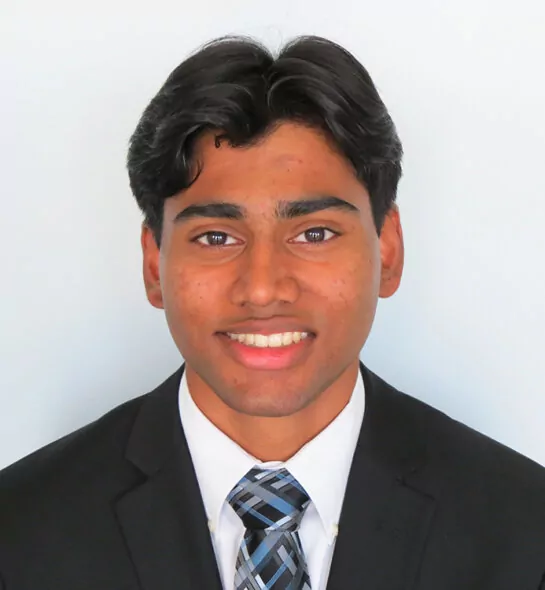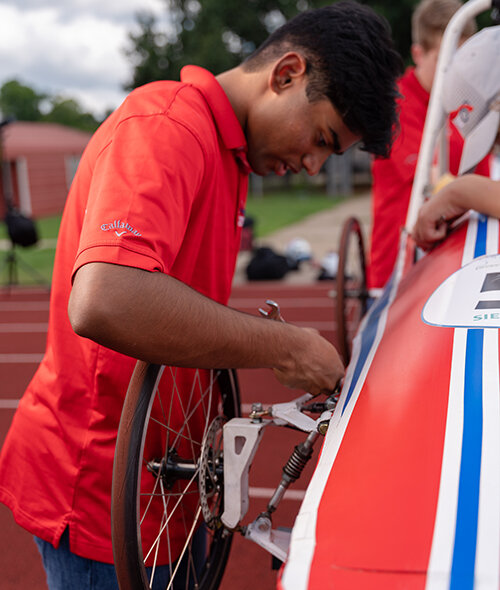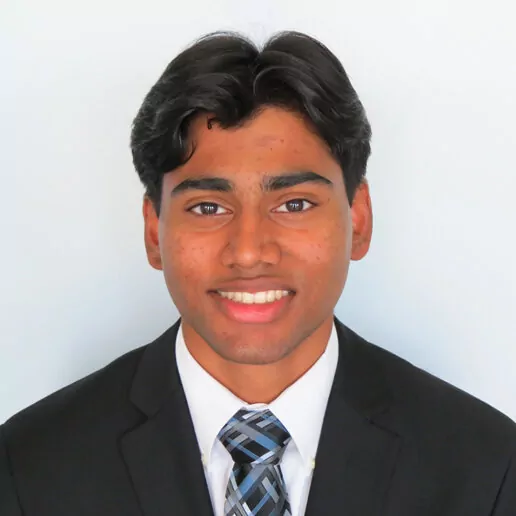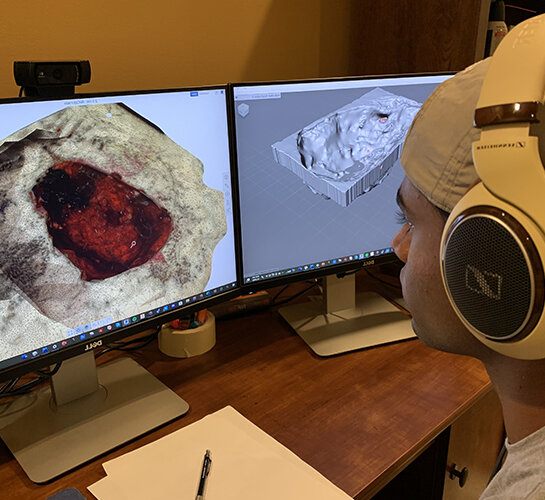Deeper Dive
In my project, I developed an integrated platform comprising of a 3D imaging system, 3D model generator, and a 3D scaffold printing system for rapid generation of personalized implants for wound treatment. The implants can monitor the wound environment for infection, deliver drugs, and can be adapted for both acellular and cellular treatment. The customization of the implants to match the wound environment allows for an improved and effective healing process. The idea for this project came from my own personal experience of having multiple injuries while playing sports and doing other activities. I was intrigued by the fact that, while most of the wounds healed within a week, I had some deep wounds that took about a month to completely heal. My research indicated that wound treatment and management are a major healthcare problem affecting more than 7 million people in the United States and costing more than $50 billion annually. Basic treatments, such as gauze, are not suitable for deep cavity wounds while advanced treatments, like skin grafting, are expensive, time consuming, and require trained personnel which limits their use. This information led to the foundation of my project. The patent-pending platform I developed has great potential for the treatment and management of wounds while alleviating the major healthcare costs in low-income and resource-limited settings.
The pandemic posed the biggest challenge for my project as I could not access school or the labs readily for my work. Hence, all of my work was conducted at home (my parents allowed me to convert a bedroom in the basement as my research room) except for the cellular work. One of the main components of the project was the development of the system for 3D imaging of wounds. This was the most challenging part as I not only had to make sure the system worked, but I also had to choose the cost-effective parts to ensure use in resource-limited facilities. I wanted to make sure it can work off a simple power system for automatic operation while at the same time provide a manual option in case of a situation or place with no power. I finalized the system by determining the optimal sensor resolution while keeping the cost low based on the widest range of wound dimensions. However, the 3D images generated lacked wound features at random locations. To overcome this, I then developed a fully customizable, rotating hinge for the camera to capture images from different angles by integrating a laser alignment-based crosshair light which also worked as a reference point for the imaging process. Scaffolds for the wound implantation are generated using a mixture of liquid formulations. Since wounds are of irregular sizes, manual mixing of the precursors of the scaffold was not working. Hence, I ended up developing an automated extrusion process with specific computer-controlled instructions depending on the size and the volume of the wounds. This process also involved optimizing the formulation of the scaffolds. The last challenging part was demonstrating the cellular scaffolds. This was also augmented by pandemic-driven restricted access to the laboratories. For these studies, I relied on my academic and industry mentors for guidance on ensuring the successful applicability of cell encapsulated scaffolds for wound healing.
I anticipate the benefits of the developed method and platform work on several levels. Given the growing health care challenges we face for treatment and management of wounds; this process will have significant impacts. The developed method is rapid and cost-effective thereby capable of providing access to low-income families and resource limited facilities and countries with treatment options for chronic wounds. The ease of use of this system will help optimize new treatment formulations integrated with the scaffolds including growth factors and oxygen delivery components for faster regeneration of the native skin environment. The treatment options will cut across racial and age boundaries and contribute not only to reduce large health care expenditures but affect the psychological well-being of society also. On the scientific side, the developed research will enable a fundamental understanding of implantable scaffolds, wound healing progression, drug transport, and delivery processes. Further research and development of the implantable scaffolds with additional cells, therapeutics, and sensors will have far-reaching implications for wound treatment and management and aid significantly in motivating students to a research career.



